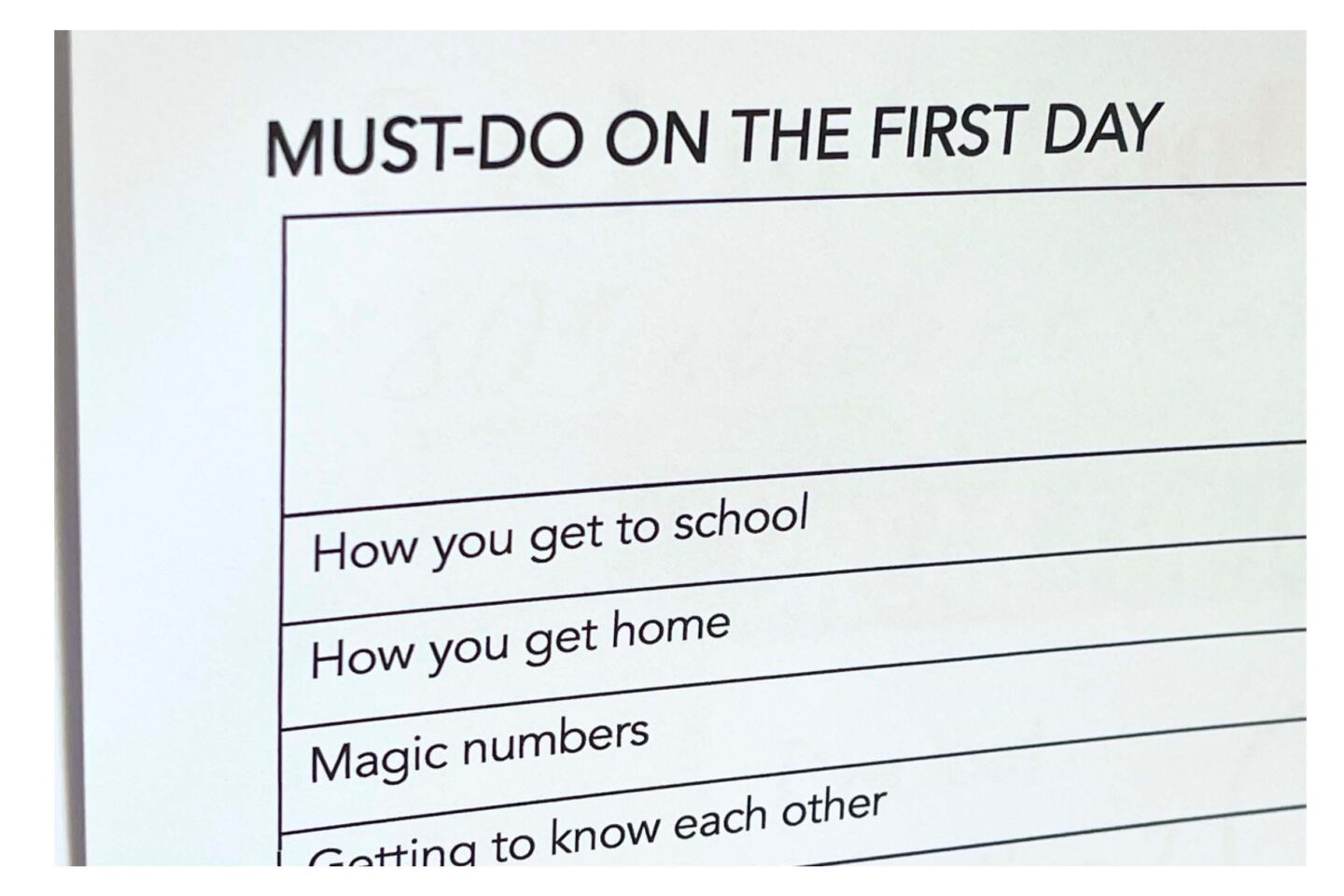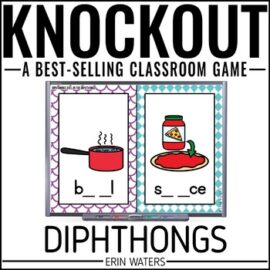As a teacher, beginning a new school year with confidence and preparedness is crucial. To ensure a successful academic journey for both you and your students, it's essential to have a comprehensive teacher checklist in place. From safety measures and routines to communication and classroom setup, this ultimate teacher checklist will guide you through key steps to optimize your year as an educator.

Teacher Checklist Section #1: Safety Measures and Drills
Prioritize the safety of your students by familiarizing yourself with emergency protocols and conducting safety drills. Review fire drills, lockdown procedures, and evacuation routes. Ensure that safety equipment is readily available and in proper working order. Communicate these measures to your students, fostering a secure and informed classroom environment. Here are some items to add to your own checklist, or you can download a done-for-you checklist for free here.
- Fire drill
- Safety/lockdown drill
- Earthquake drill
- Tornado drill
- You get hurt at recess
- Your teacher has an emergency
Check out this Amazon list for books that explain ways to talk to kids about scary things.
Teacher Checklist Section #2: Routines and Procedures
Establish consistent classroom routines and procedures to maintain an organized and productive classroom. Create clear guidelines for classroom entry, exit, transitioning between activities, and managing materials. Teach these routines during the first week and reinforce them throughout the year, fostering a sense of structure and predictability.
Here are some ideas to get started, or download the full checklist here.
- Nurse visits
- Asking a peer for help
- What is an emergency? (Bleeding, throwing up, etc.) Tying your shoe
- Indoor recess expectations
- Raising your hand to ask a question
- Getting a drink
- Using the bathroom
- Getting a tissue
- Getting a band-aid
- When I’m done
- Taking attendance
- Getting a new pencil
- Sharpening your pencil
- Unfinished work
- Accessing technology (when and how)
- Treating our technology responsibly
- Passwords
- Using supplies (glue, scissors, etc.)
- Throwing away trash
- Visitors in the classroom
You can grab the entire checklist for free below:

Teacher Checklist Section #3: Daily Schedule
Craft a detailed daily schedule that allocates time for instruction, breaks, and transitions. Clearly define the start and end times for each subject or activity. Optimize your schedule by incorporating various instructional formats to cater to diverse learning needs. Dedicate sufficient time for student engagement and reflection.
Here are some daily schedule components that you might want to consider:
- Arriving: entering the room + unpacking
- Making a lunch choice
- Turning in things from home
- Morning work + expectations [what to do when finished]
- Morning meeting
- Calendar
- Math block
- Literacy block
- Small group: when it’s okay to interrupt
- Lining up for lunch [what to bring]
- Going to lunch
- Lunch behavior expectations
- Recess expectations
- When recess is over: lining up
- Coming back after recess
- Lining up to leave the classroom [general]
- Walking in the hallway
- Sitting on the carpet
- Writing workshop expectations

Teacher Checklist Section #4: Classroom Rules, Expectations, and Systems
Set clear expectations by establishing classroom rules that promote respect, responsibility, and a positive learning environment. Discuss these rules with your students and involve them in creating shared agreements. Implement behavior management systems like charts or rewards to encourage positive choices.
Communicate academic and behavioral expectations to your students. Discuss your goals for the year, emphasizing the importance of effort and perseverance. Clearly outline the criteria for success and encourage students to set personal goals, fostering ownership and motivation.
Rules and Systems to Teach:
- Physical boundaries
- Accessing classroom library
- How we treat our books
- Managing our book boxes
- Maintaining desks + personal space
- General behavior expectations: do’s and don’ts
- Incentives
- Consequences
- Class Dojo
- Bringing in belongings from home
- How we treat each other
- What to do when there is a substitute
- Noise levels
- Mindset expectations
- Late arrivals
- Coming back after being absent
- Participating in classroom discussions
- Positive and negative language
- How to talk to our peers


Teacher Checklist Section #5: Must-Dos on the First Day
Create a positive tone on the first day by greeting each student individually and making them feel welcome. Introduce yourself, share personal information, and express your passion for teaching. Engage students in team-building activities and icebreakers to establish a positive classroom culture from the start.
Here are some ideas:
- How you get to school
- How you get home
- Magic numbers
- Getting to know each other
- Learning areas of the classroom
- Entering the classroom: backpack + coat storage
- Attention-getters
- Basic schedule walk-through
- Restroom expectations
- Lunch expectations
- Playground + recess expectations
Want this entire checklist as a printable tool for free? Fill out the form below:

Teacher Checklist Section #6: Your Classroom Set-Up
Organize and decorate your classroom to create an inviting and functional space. Arrange desks or seating to encourage collaboration and engagement. Display educational posters, quotes, and student work to celebrate achievements. Ensure easy access to materials and supplies. Designate specific areas within your classroom for different activities, such as a reading corner, science station, or art table. Set up your classroom library, supplies, and materials for easy access. Label storage spaces clearly, promoting independence and organization.
Consider components like:
- Seating arrangement
- Word wall
- Bulletin boards (school-mandated displays? Boards for literacy, student work, calendar, math stations, etc.)
- Teacher workspace (traditional teacher desk, small group table, etc.)
- What supplies will students bring and what will you or school provide?
- Labeling with magic numbers
- Decorating scheme (if any)
- Organize classroom library
- Organize shared supplies
- Organize math manipulatives
- Organize writing center
- Set up common areas, such as the rug for morning meeting
- Purge old materials
- Where to display learning objectives
- Calendar area

Teacher Checklist Section #7: Communication
Establish effective communication channels with students, parents, and colleagues. Share your preferred method, such as email, class website, or a communication app. Provide parents with an introduction, outlining expectations and ways they can support their child's learning.
- Take-home folders
- Weekly or monthly newsletter
- Your availability (if they prefer phone then email, etc.) and what hours
- Sharing technology info with parents: how to access at home, expectations for accessing at home, and student user names + passwords
- Class Dojo (how will parents sign up + what do they need to know about it?)
- Homework (how will you share your homework or UnHomework plans with families?)
- Monthly or weekly calendar (how will you communicate important dates and events?)
Teacher Checklist Section #8: First Two Weeks Planner
Develop a detailed plan for the first two weeks, including learning objectives, activities, and assessments. Incorporate team-building, goal-setting, and establishing classroom routines. Stay flexible and adjust lesson plans based on ongoing assessments of student needs and interests.

By following this ultimate teacher checklist, you can start the school year with confidence and optimize your teaching experience. Embrace flexibility and adaptability as you navigate the unique needs of your class. With thorough preparation and organization, you'll create a safe, engaging, and productive learning environment for your students. Here's to a successful year of growth and achievement!
Make sure to grab this checklist here:







 Arm you with high-quality tools: Sleep peacefully at night knowing you’re doing what’s best for your students.
Arm you with high-quality tools: Sleep peacefully at night knowing you’re doing what’s best for your students. Save your energy: Provide resources that cost you little energy (that stuff is precious)---but have high impact on your students.
Save your energy: Provide resources that cost you little energy (that stuff is precious)---but have high impact on your students. Light your spark: Putting fun back into your classroom after the hardest teaching years can be just what you and your students need.
Light your spark: Putting fun back into your classroom after the hardest teaching years can be just what you and your students need.
Leave a Comment